

SALAMATA HAUS & TOURS
ECOEXPLORERS SPECIES IDENTIFICATION KEY
SAMPL
The following figures show where the EcoExplorers activities should take place for the sampling of the seagrass meadow and mangrove forest It is important to conduct the activities in these sites because all the images and information provided in the Species Identification Keys were taken here These sites are the safest areas where participating children can work in with the team facilitating the program.
SEAGRASS MEADOW
Figure1:Transect1(yellow)can befoundatcoordinates -702866degreesSand 14701671 degrees E while Transect2(red)islocatedat coordinates-702923degreesS and14701686degreesE

MANGROVE FOREST

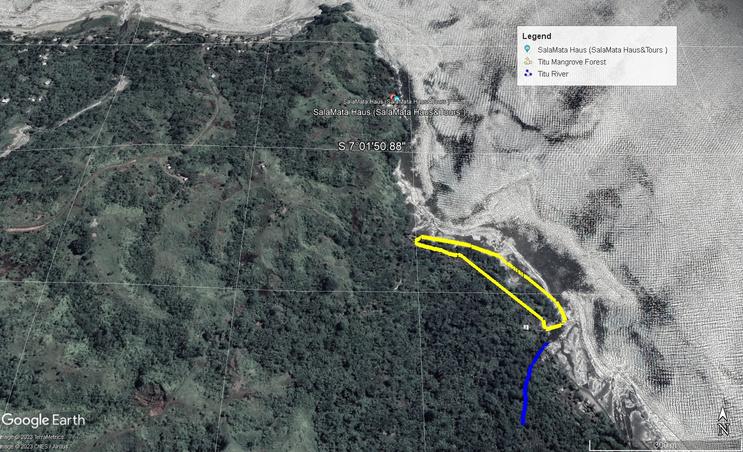
Figure2:TituMangroveStudySitelocatedatcoordinates-70200Sand1470103E theTitumangrovestudysiteisamere 400metersawayfromtheSalaMataHaus&Tours Adroppedpinindicatesthetwotransects whiletheTituRiverisshownin blue

SEAGRASS SPECIES
IDENTIFICATION KEY
1
Halophila ovalis (Ho)

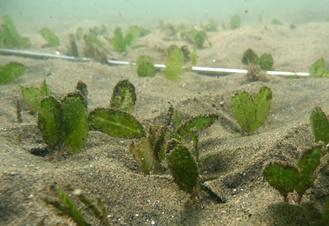
Found in meadows that dominate a sandbank or other patch of seafloor Found at a depth of 1.5m, grow on different substrates: muddy, sandy and sandy-mud
Known to be a preferred dugong food.
Categorized into three morphological/ growth forms- small, intermediate and big-leaved.
Oval-shaped leaves in pairs
8 or more cross veins
No hairs on the leaf surface
The roots get up to 800mm long and are covered in fine root hairs.


2. ta (Cr)
SEAGRASS SPECIES
IDENTIFICATION KEY
2. Cymodocea rotundata (Cr)

Found on shallow reef flats
Flat strap-like leaves with a width of 2-4mm
Rounded, smooth leaf tip
Smooth and thick rhizomes (underground stems)
Scars from well-developed sheaths form a continuous ring around the stem
3. Enhalus acorodies (Ea)
Very long ribbon-like leaves 30-150 cm long
Leaves with inrolled leaf margins
Thick rhizome with long black bristles and cord-like roots
Found on shallow/intertidal sand/mud banks (often adjacent to mangrove forests)
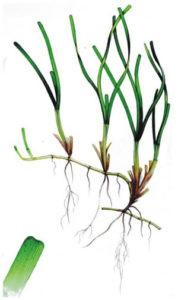



MANGROVE SPECIES
IDENTIFICATION KEY
1. Sonneratia alba
Leaf structure: Leaves are simple and stalked Opposite leaves are elliptic to ovate or obovate in shape With rounded or broader leaf tips The tips of young leaves have a distinct pink mark.
Flower: White petaled flowers, numerous white stamens giving it a ‘puffy-like’ appearance Flowers are in clusters of 5-8.
Fruit: Its hard fruits resemble berries that are round and flattened, with a cup-shaped calyx at the base of the fruit. Mature fruit is approximately 2-4.5cm and ripens to green with a dull surface
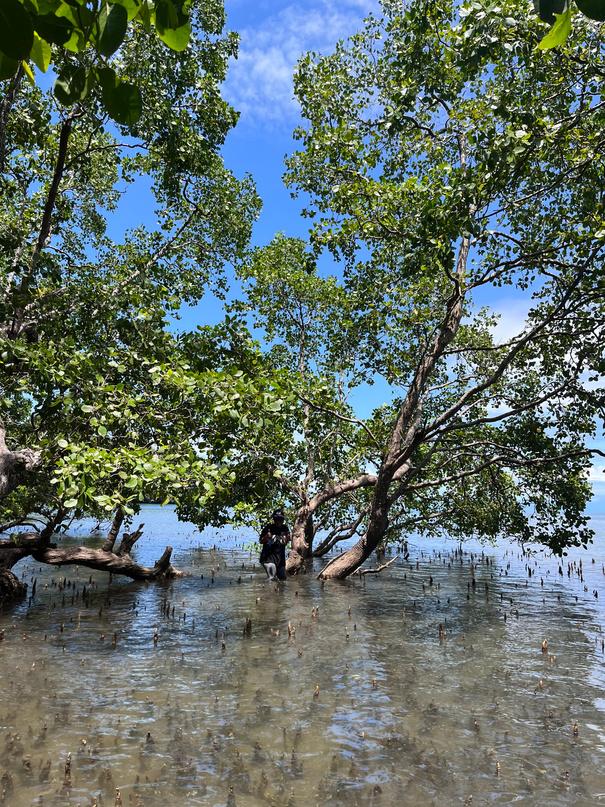

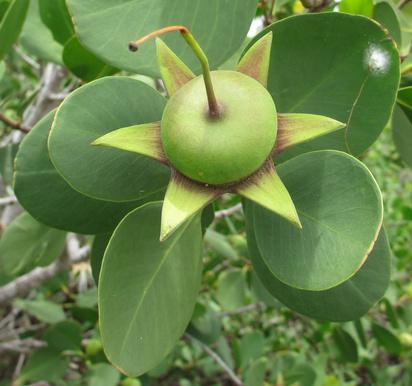

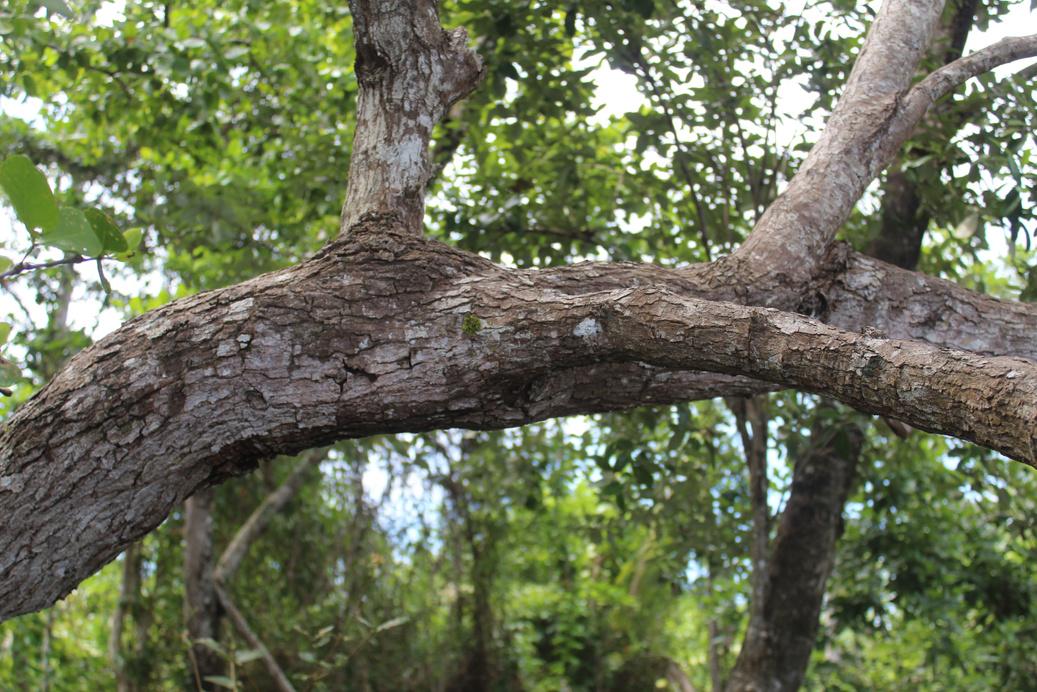


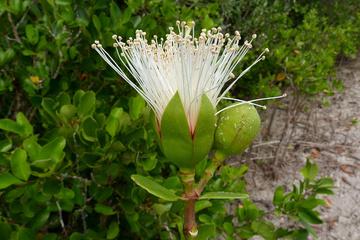

Bark: Cream-colored to brown bark, with smooth, fine to cracked longitudinal fissures.
Rooting system: Thick and blunt pneumatophores - cone-like in shape or conical roots. Grows 1m tall and emerges from the mud, exposed during low tides and submerged during high tides (bottom right image)
Habitat and Ecology: It is a tree with a broad spreading canopy, usually 1520m but it can grow up to 30m in height This species is found in the lowintertidal zone Prefers high salinity, common along shallow sandy seashores and tidal creeks.
MANGROVE SPECIES
IDENTIFICATION KEY
2. Avicennia marina
Leaf structure: The leaves are thick, 5 to 8 cm long, a bright, glossy green on the upper surface, and silvery-white, or grey, with very small matted hairs on the surface below. Elliptic or oblong-obovate leaves with a round tip. Leaf arrangement is in opposite pairs
Flower: Range from white to a golden yellow colour, are less than 1 centimetre across, and occur in clusters of three to five
Fruit: Greyish–green, oval with a short beak at the tip.




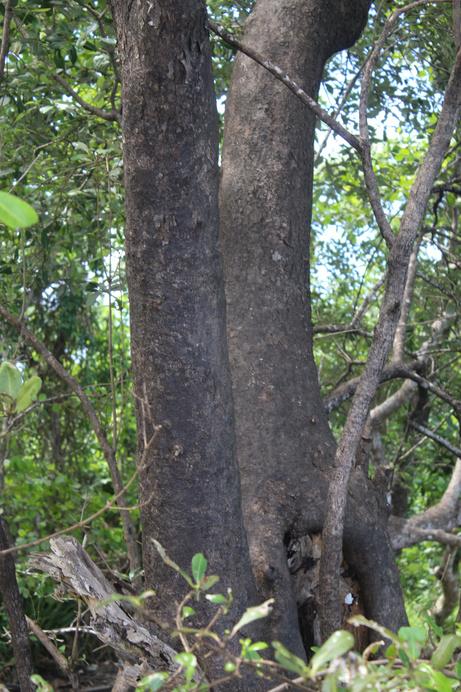

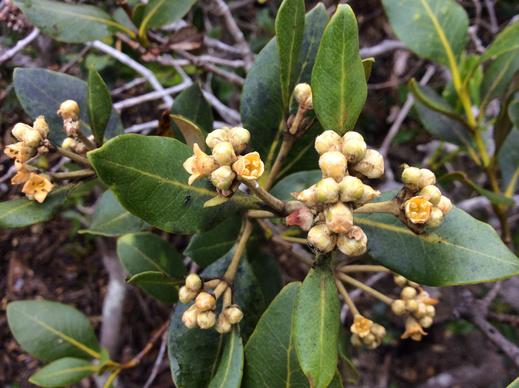
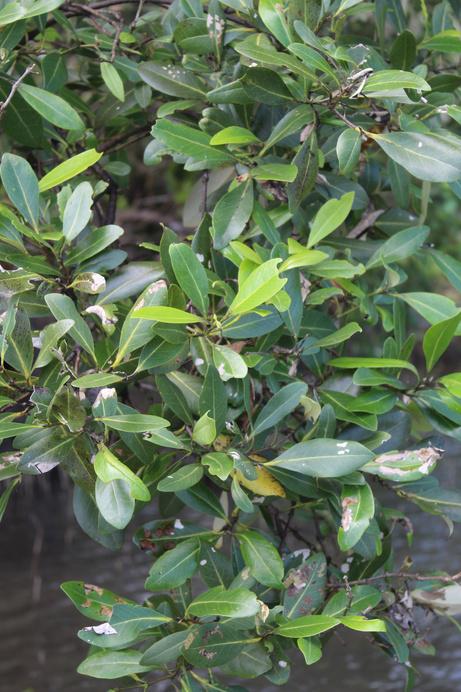
Bark: Outer bark is smooth, or slightly flaky grey to blackish colour.
Rooting system: Flat root system, the underground, horizontally growing roots grow away from the trunk and develop pencil roots in regular intervals which grow up to 30cm in height, measured from the soil to the tip of the pencil root (seen around the trunk in the images on the far left & bottom right)
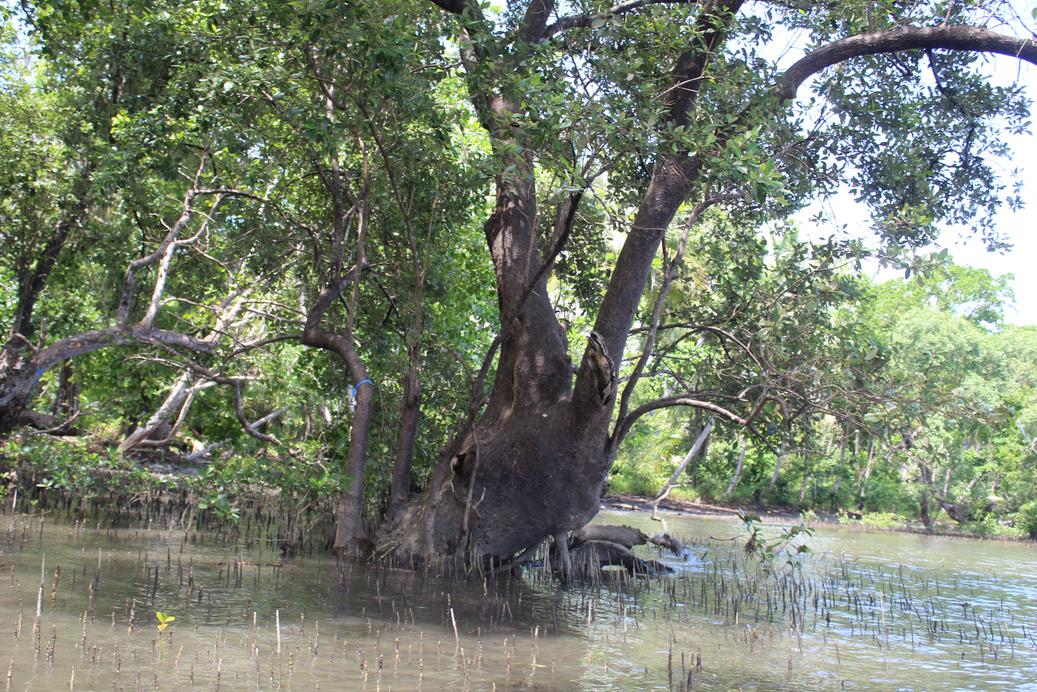
Habitat and Ecology: Growth ranges from shrubs, to medium-sized (2-5m) and large trees up to 30m in height Commonly found from downstream to intermediate zones; on riverbanks, mouth of rivers, lagoons, rocky beaches and lower tidal areas.
MANGROVE SPECIES
IDENTIFICATION KEY
3. Rhizophora stylosa
Leaf structure: Broad leaves, generally opposite and have an elliptic shape Has tiny dots on the lower surface and a pointed tip The upper side is smooth and dark green the bottom is waxy, light green to yellowish in color. Has a distinct stipule (top right image)
Flower: Composed of creamcoloured, linear petals arranged in a cross-shaped pattern.
Fruit: Brown, pear-shaped fruit hangs with the smaller end pointed down (top left image).



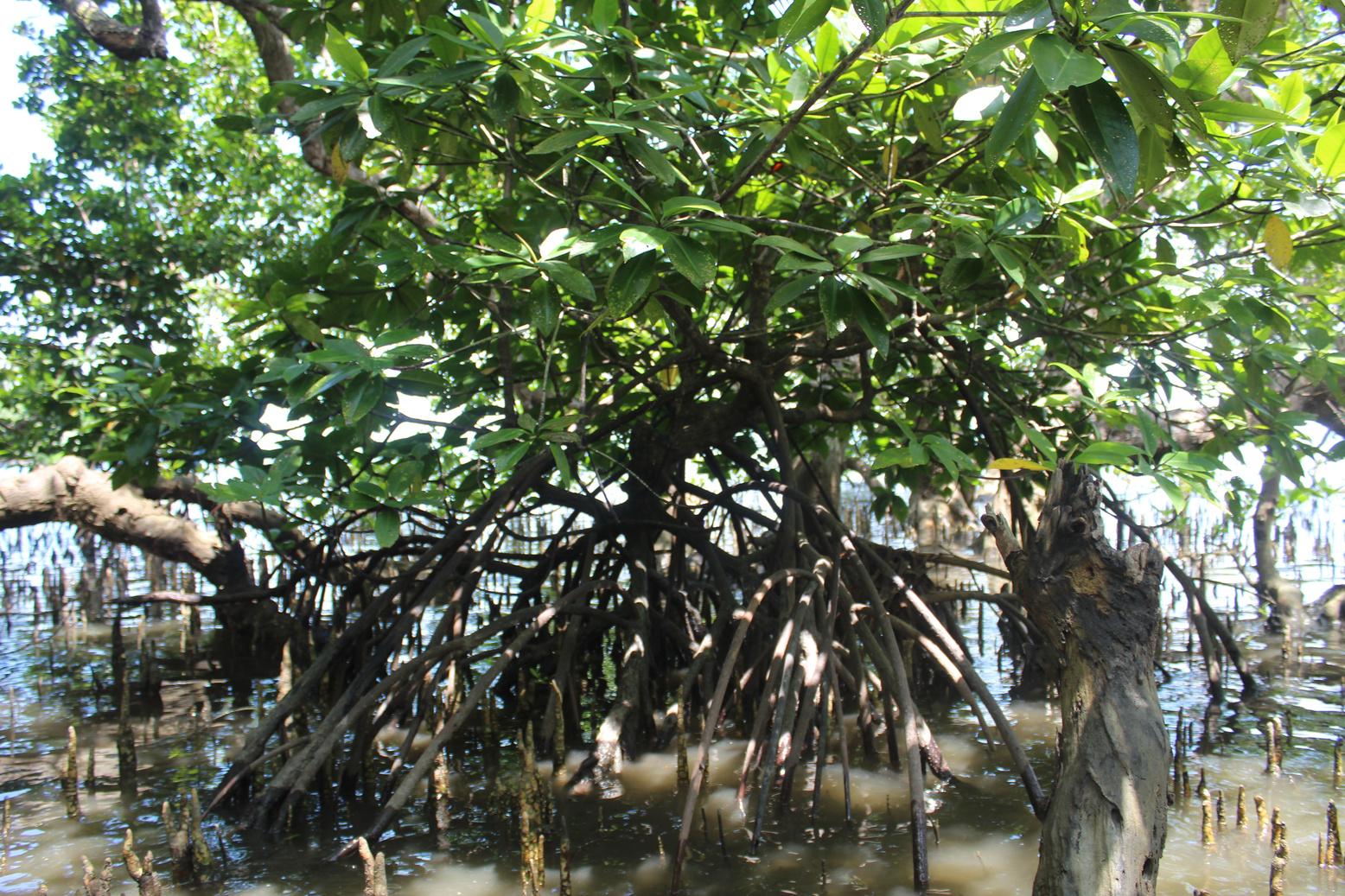



Bark: The bark of juvenile trees is reddish-brown and smooth, while the bark of adult trees is greyish-black and rough
Rooting system: This species has typical stilt and prop roots. Stilt roots arise from the trunk and grow toward the soil. Prop roots grow from the horizontal branches of the trees
Habitat and Ecology: Commonly found in open seawater on exposed shores. Including on live reef and sandy shores. It can grow up to 30m, but it is more common at 5-10m This species is also found in the mouth of estuaries
